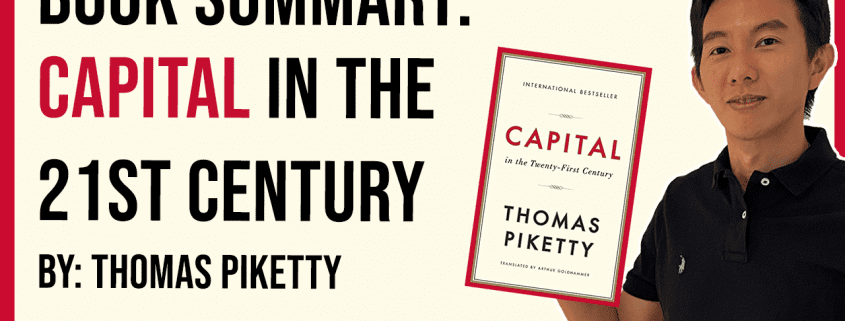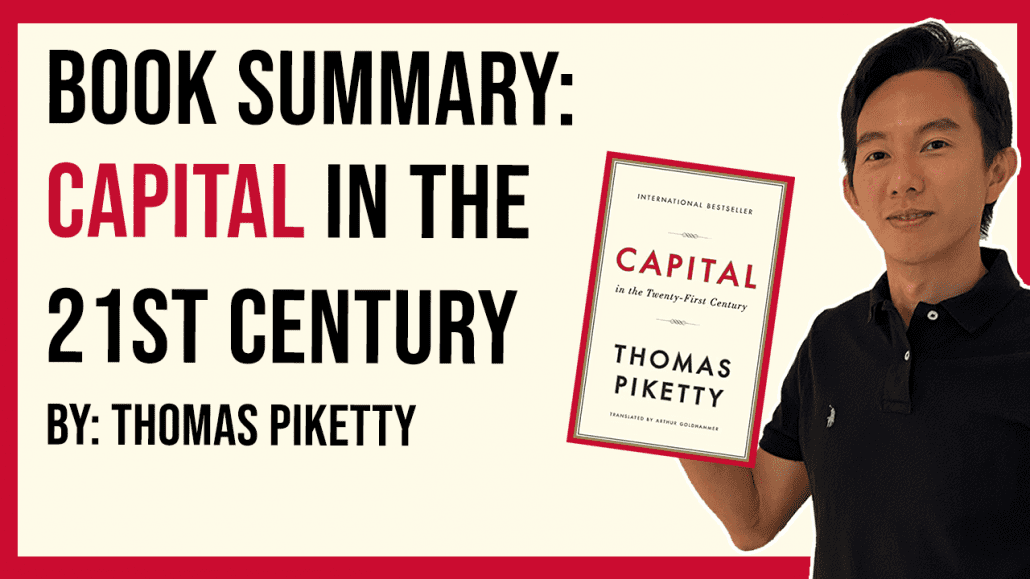Book Summary: Capital in the Twenty-First Century by Thomas Piketty
Join our Telegram channel for more market analysis & trading tips: t.me/synapsetrading
“Capital in the Twenty-First Century” by Thomas Piketty has sparked a global conversation on the distribution of wealth and the future of capitalism.
In this detailed book summary, we will dive into the main message of the book, its key ideas, and how to apply its teachings in the real world.
We will also take a closer look at the background of the author and any other points to consider.
In this blog post, I will share all about this book and the author, key ideas from the book, and how you can apply it to your own trading & investing journey.
Table of Contents
About the Author
Thomas Piketty is a French economist and professor at the École des Hautes Études en Sciences Sociales in Paris.
He has published numerous papers on economic inequality and the history of wealth, and “Capital in the Twenty-First Century” is his most well-known work.
Piketty’s research has been widely cited and he has received numerous awards for his contributions to the field of economics.
What is the Book About?
The central argument of “Capital in the Twenty-First Century” is that wealth inequality is increasing, and unless drastic action is taken, it will continue to do so.
Piketty argues that this trend is not a natural or inevitable consequence of capitalism, but rather the result of specific historical and political conditions.
He uses data spanning over two centuries and numerous countries to demonstrate that the concentration of wealth in the hands of a few is not a new phenomenon, but rather a persistent one that has waxed and waned over time.
Piketty’s main message is that rising wealth inequality is not only a moral problem, but also an economic one.
He argues that such a concentration of wealth can lead to social and political instability, as well as hamper economic growth.
He also makes the case that current policies and approaches to addressing wealth inequality, such as progressive taxation, are insufficient and that more drastic measures are needed.
10 Key Ideas from the Book
- Wealth inequality is a persistent and universal problem.
- The concentration of wealth in the hands of a few is not a natural or inevitable consequence of capitalism, but rather the result of specific historical and political conditions.
- Rising wealth inequality can lead to social and political instability, as well as hamper economic growth.
- Progressive taxation alone is insufficient in addressing wealth inequality.
- Capital, or wealth, accumulates faster than economic growth.
- The return on capital (r) has historically been higher than the rate of economic growth (g).
- The difference between r and g (r-g) determines the rate of wealth concentration.
- The concentration of wealth can be reduced through policies such as a global wealth tax.
- Inherited wealth plays a significant role in perpetuating wealth inequality.
- The future of capitalism depends on addressing the issue of wealth inequality.
10 Ways to Apply the Teachings
Actionable Ways to Apply What is Taught in the Book:
- Support progressive taxation and advocate for policies that aim to reduce wealth inequality.
- Educate yourself and others about the history and causes of wealth inequality.
- Support organizations and campaigns that work towards reducing wealth inequality.
- Use your own wealth and influence to advocate for change and support initiatives that aim to reduce wealth inequality.
- Support candidates and politicians who prioritize reducing wealth inequality.
- Take part in grassroots organizing and activism to push for change at a local level.
- Use your voice and platform, whether online or offline, to raise awareness about the issue of wealth inequality.
- Support media outlets and journalists that cover issues related to wealth inequality.
- Donate to charities and organizations that focus on reducing wealth inequality and providing support to those impacted by it.
- Consider how your own consumption and investment choices may be contributing to wealth inequality and make changes accordingly.
Other Important Points from the Book
Other Points to Consider:
Piketty’s analysis and conclusions have been met with both praise and criticism from other economists and scholars.
Some have questioned the accuracy and comprehensiveness of the data used in the book, while others have criticized the proposed solutions as unrealistic or potentially harmful.
It is important to consider these criticisms and examine the data and arguments presented in the book with a critical eye.
The book does not provide a one-size-fits-all solution to the issue of wealth inequality, but rather presents a framework for thinking about the problem and potential ways to address it.
Concluding Thoughts
“Capital in the Twenty-First Century” is a thought-provoking and comprehensive examination of the issue of wealth inequality.
Its main message and key ideas offer important insights and considerations for policy makers, economists, and individuals looking to address this pressing issue.
This book is recommended for anyone interested in economics, politics, and social justice, as well as anyone looking to better understand the underlying causes and potential solutions to wealth inequality.
Now that I have covered all the key learning points of this book, would you consider adding it to your reading list?
For those who have already read it, what are some of your key learning points?
Let me know in the comments below!

If you would like to find more book summaries and recommendations, also check out: “Best Investing & Trading Books of All Time”
 Our flagship mentoring program is suitable for both beginners and advanced traders, covering the 4 strategies which I used over the past 15 years to build up my 7-figure personal trading portfolio.
Our flagship mentoring program is suitable for both beginners and advanced traders, covering the 4 strategies which I used over the past 15 years to build up my 7-figure personal trading portfolio.
 If you're looking for a reputable brokerage that covers all products (SG stocks, US stocks, global stocks, bonds, ETFs, REITs, forex, futures, crypto) and has one of the lowest commissions, this is what I currently use.
If you're looking for a reputable brokerage that covers all products (SG stocks, US stocks, global stocks, bonds, ETFs, REITs, forex, futures, crypto) and has one of the lowest commissions, this is what I currently use.
After trading for 18 years, reading 1500+ books, and mentoring 1000+ traders, I specialise in helping people improve their trading results, by using tested trading strategies, and making better decisions via decision science.






Leave a Reply
Want to join the discussion?Feel free to contribute!